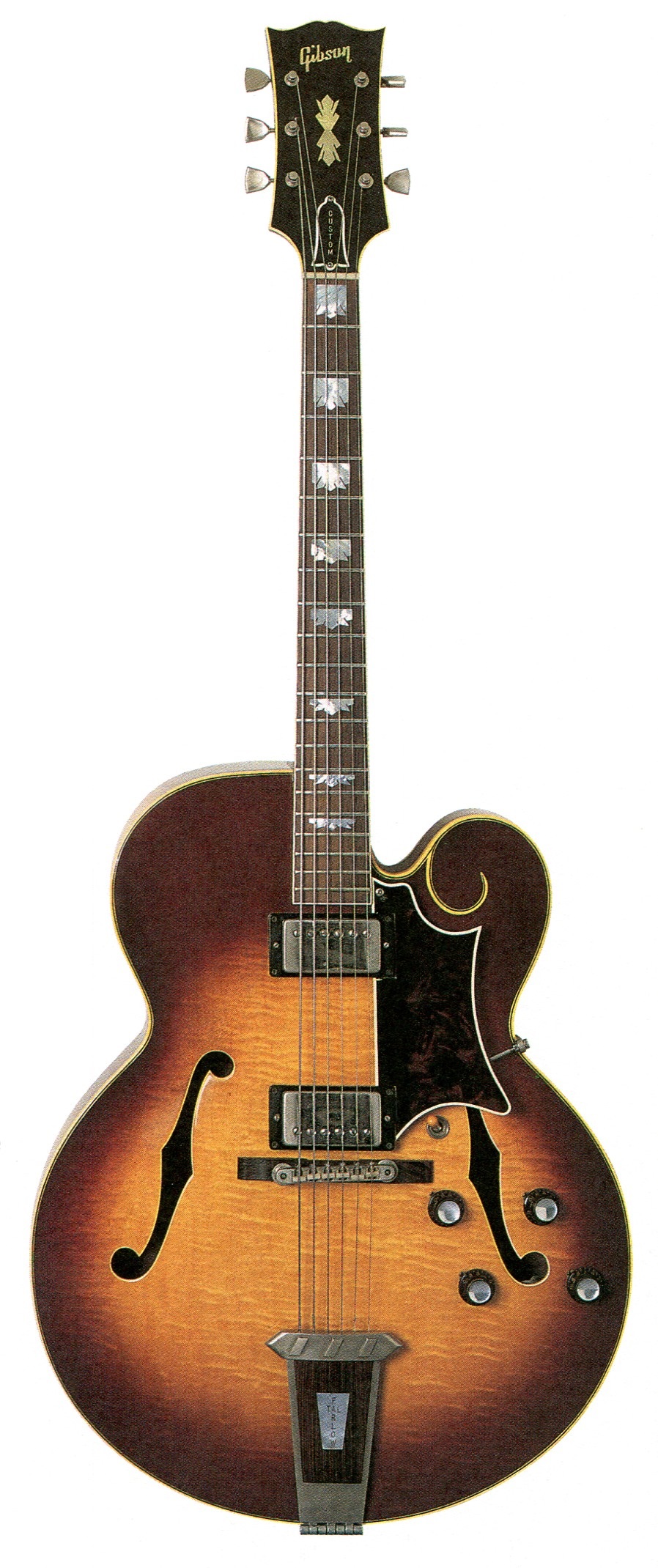Gibson Tal Farlow

Following close on the heels of the Johnny Smith and Barney Kessel models, Gibson’s Tal Farlow model secured Gibson’s image as the preferred guitarmaker for elite jazz musicians.
Farlow was inspired by the recordings of Charlie Christian, who practically invented electric jazz guitar, and pianist Bud Powell. The speed, accuracy and complexity of Farlow’s style – demonstrated on a series of solo albums in the mid 1950s – put him in the upper echelo of bebop jazz guitarists.
Farlow’s signature model was built on the familiar single-cutaway body of Gibson’s 17-inch ES-5 model but with some unconventional features, including a scrolled cutaway bout (simulated with inlaid binding material), fingerboard inlays that were the “crest” of the J-200 flat-top turned upside-down, and a double-crown peghead ornament.
Ironically, Farlow (like Johnny Smith) had gone into semi-retirement shortly before Gibson debuted his signature model, not to emerge until the late 1970s. In the meantime, his namesake guitar sold less than 100 units, making it the rarest of Gibson’s artist models of the 1960s.
